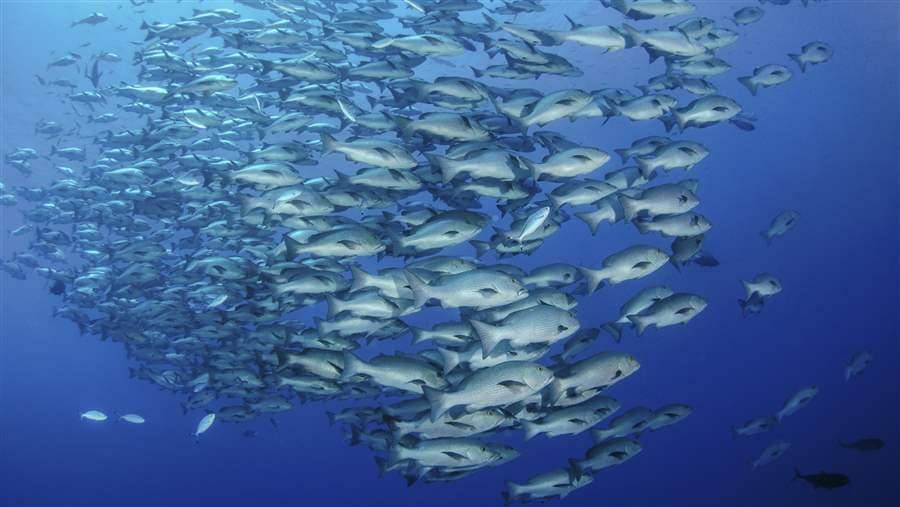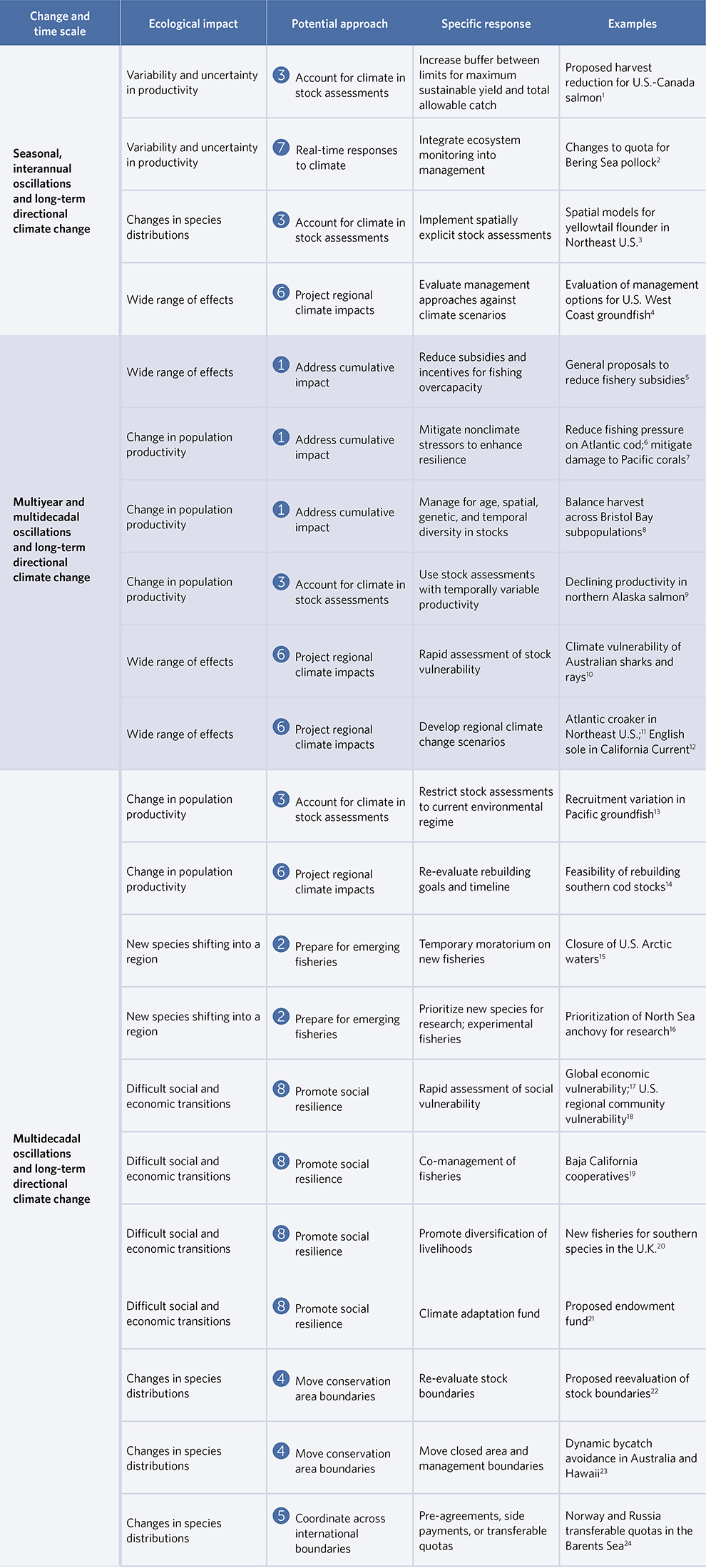New Study Outlines Range of Climate-Ready Options for Fisheries Managers
 © Getty Images
© Getty ImagesMarine Ecosystems at Risk
Action is needed reduce the impact of climate change on people and marine ecosystems.
Ocean warming and acidification are already having measurable effects on marine ecosystems, but their implications for the future are substantially more serious. They already appear to be changing productivity, shifting populations, and damaging the carbonate shells of plankton and shellfish. To date, however, fishery managers have faced challenges in incorporating these anticipated changes into their management plans. In a recent article featured in a special issue of the journal Oceanography, authors Malin Pinsky and Nathan Mantua discuss eight approaches to address these problems and potentially reduce the impact of climate change on people and ecosystems. Many of these ideas are already in use, but the authors conclude that managers can greatly improve climate readiness by considering the full range of available actions.
8 adaptation approaches: A toolbox for managers
Adaptation to climate change is complex and typically requires nuanced local and regional strategies. Managers can draw from the following broad approaches in building an adaptation plan:
- Address cumulative impacts on marine ecosystems: Reducing nonclimate stressors such as overfishing and habitat loss can increase fisheries’ resilience to climate change.
- Prepare for emerging fisheries: As the distributions of marine species across the oceans shift in response to climate change, some traditional fisheries may close and others may emerge or move into new jurisdictions. Managers can prepare for new fisheries by limiting harvest while populations establish themselves and by prioritizing research on new stocks.
- Account for climate in stock assessments: Climate indicators can be incorporated directly into stock assessment models to capture the effects of environmental conditions on population growth. Alternatively, climate impact can be considered as added uncertainty.
- Move conservation area boundaries: The boundaries of some conservation areas can be adjusted if the targeted species shift. Those that protect multiple species or a particular habitat, however, may need to remain unchanged.
- Coordinate across international boundaries: Shifts in species distributions can create incentives for overharvest. For example, a country that is losing a fishery due to climate change may overfish the target species to compensate for the anticipated loss. International agreements can be developed or revised to prevent this from occurring, including through the trading of fishing quota across borders.
- Project regional climate change impact: Global climate models can be downscaled to finer-resolution projections for specific locations, allowing comparison of future scenarios. Long-term forecasts can inform management decisions, such as which fisheries to maintain and when to prepare for ripple effects on connected businesses.
- Monitor ecosystems and respond quickly (real-time responses): Ecosystem monitoring programs can enable managers to react quickly to change by, for example, adjusting quotas when fish populations increase, decline or shift.
- Promote social resilience: In general, policies that increase flexibility within the fishing industry while maintaining effective conservation measures will benefit climate adaptation. Such policies include facilitating alternative fisheries, transferable fishing quotas, and livelihood diversification.
Climate change is often perceived as a distant problem, but its effects on marine ecosystems are happening now. This article in Oceanography offers a useful starting place for managers to think systematically about how to help fisheries and the people that depend on them become more resilient.

Download the PDF of this document for more detail on how to reduce the impact of climate change on marine ecosystems.











